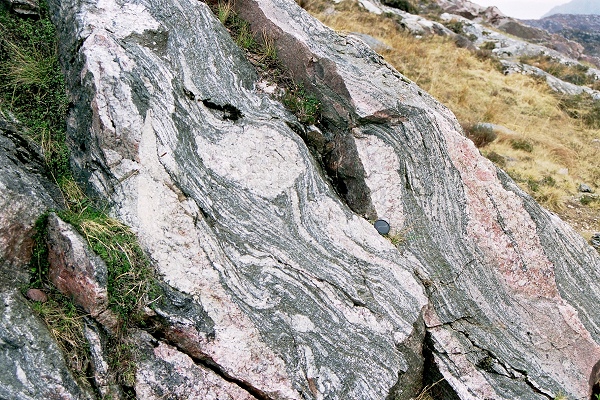
| Home | Geological History | Stratigraphy | Area map | Rock Index | About |
| Scourie | Achmelvich | Laxford | Clachtoll | Stoer | Assynt | Skiag Bridge | Glencoul | Knockan | Borralan | Ledmore |
Locality: road-cut on north shore of Loch Laxford

![]() Laxfordian felsic gneiss, Lewisian Complex, Loch
Laxford
Laxfordian felsic gneiss, Lewisian Complex, Loch
Laxford
This is the typical appearance of the gneiss on the north
side of Loch Laxford. The main feature of the gneiss at
this scale is the banding of grey and white layers. This
banding is also folded. The white bands are coarser grained
and very poor in mafic minerals. The grey bands contain
mafic minerals, principally biotite mica. Some of the
sheets of white material look as if they have been intruded
after the formation of the banding, as they cut across it.
At the right hand side there is also a small sheet of pink
granite. Gneissic rocks in Precambrian terrains are often
as complex as this.
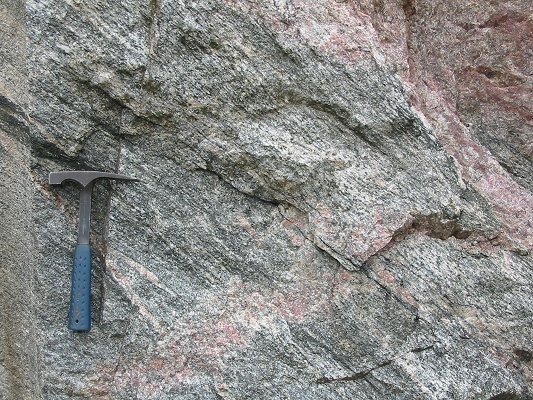
![]() Laxfordian felsic gneiss, Lewisian Complex, Loch
Laxford
Laxfordian felsic gneiss, Lewisian Complex, Loch
Laxford
This close-up view of a more uniform part of the gneiss
reveals the streaky banding of dark minerals and light
minerals. Even in this photo the banding is interrupted
here and there by veins of pink granite. The boundaries
betwen gneiss and granite are not at all sharp. Both rocks
formed when they were very hot: the gneiss from solid rock
near its melting point, the granite from the
crystallisation of small amounts of melted rock, formed
nearby and introduced in small veins.
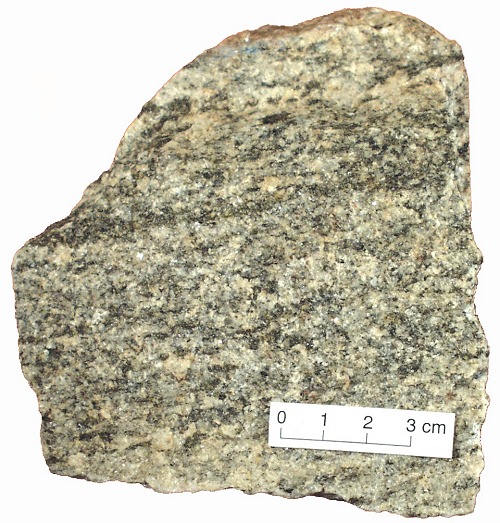
![]() Laxfordian felsic gneiss, Lewisian Complex, Loch
Laxford
Laxfordian felsic gneiss, Lewisian Complex, Loch
Laxford
This rock is a biotite gneiss. It is mostly composed of
creamy-white feldspar and quartz, together with dark
minerals, of which the most abundant is the dark mica
biotite. The dark minerals are arranged in a streaky
banding, giving the rock a gneissic texture. The flakes of
mica are also aligned with their long dimensions parallel
to the mineral banding.
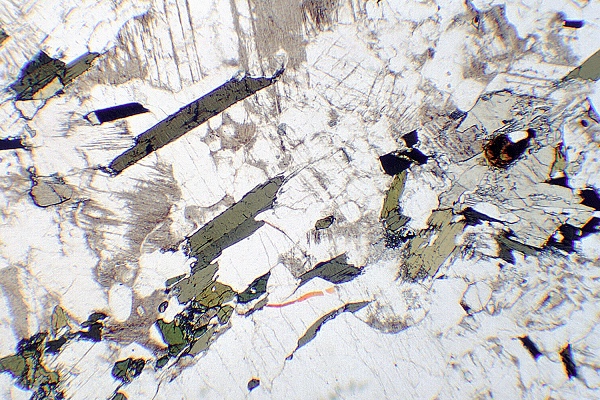
![]() Laxfordian felsic gneiss, Lewisian Complex,
Loch Laxford
Laxfordian felsic gneiss, Lewisian Complex,
Loch Laxford
This gneiss contains essentially the same minerals as a
granite, but is distinguished at this scale from an
unmetamorphosed igneous rock by the alignment of the dark
minerals. The colourless minerals are quartz and feldspar,
the feldspar appearing dusty with alteration. The elongate
dark brownish minerals are biotite mica, and at lower left
there is some greenish hornblende.
Plane polarized light, field of view 6 mm across
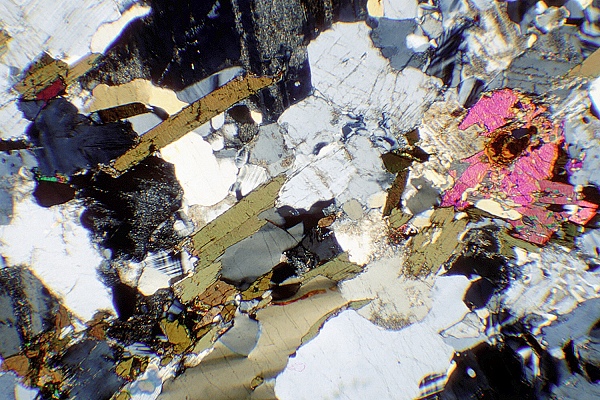
![]() Laxfordian felsic gneiss, Lewisian Complex,
Loch Laxford
Laxfordian felsic gneiss, Lewisian Complex,
Loch Laxford
In this view, feldspars and quartz appear in shades of
grey to black, while hornblende and biotite mica are brown
and greenish-brown. The banding of the gneiss is apparent
from the elongate shapes of the minerals, from top right to
bottom left.
Crossed polars, field of view 6 mm across
| Scourie | Achmelvich | Laxford | Clachtoll | Stoer | Assynt | Skiag Bridge | Glencoul | Knockan | Borralan | Ledmore |
| Home | Geological History | Stratigraphy | Area map | Rock Index | About |
D.J. Waters, Department of Earth Sciences, May 2003